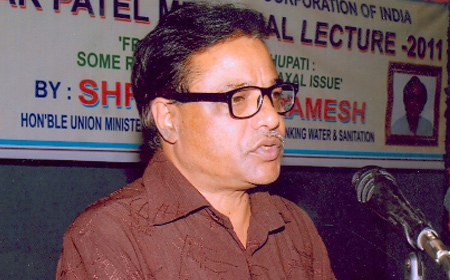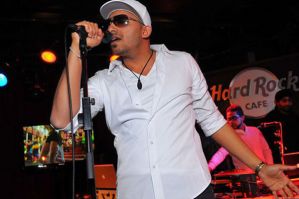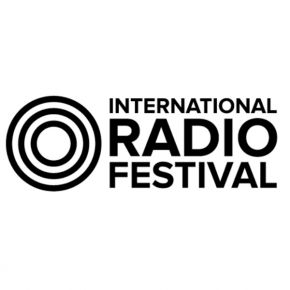LD Mandloi: ôAIR has no competition with private FM stationsö

Being the largest public service broadcaster in the country, All India Radio has created a separated space for itself in an industry largely dominated by private FM players. Although the channel faced severe criticism for lack of dynamics in terms of content and programming, it bounced back with a renewed life as it revamped its two major channels FM Rainbow and Gold across cities.
While most other private FM players are exploring new content and expansion plans with the FM phase III coming up, AIR is taking a different route and engaging DRM transmitters to enable a speedy transition to digital broadcasting. This in turn is stated to increase its reach with good quality in many cities.
In a conversation with Radioandmusic.com’s Chandni Mathur, All India Radio director general Leeladhar Mandloi highlights the growth of AIR and how it stands distinguished from private FM broadcasters.
Excerpts:
How would you term 2012 for All India Radio in terms of revenue growth?
In terms of revenue and growth, 2012 was quite favourable for All India Radio. We have achieved more than the target set for the year.
Most AIR stations were revamped due to lack of revenue earnings and listenership. Do you feel this was an inevitable move?
AIR being the public service broadcast organization, has the mandate of not only revenue earning, but rather it also has to cater to the needs and aspirations of the public. Therefore we had to revamp the channels accordingly.
Was it a move to bring them on par with FM stations, growing largely now?
Being the largest public service broadcaster, AIR has no competition with private FM stations in terms of reach as well as its content.
Which of your channels fared well in the past year?
As everybody knows, AIR FM Gold has become top most channels amongst all FM channels on-air as on date. It fared really well in 2012 and gave good results.
What is the scenario like in terms of advertising?
AIR is growing day by day in terms of advertising without a doubt. During the last five years, it has grown in its revenue pie from two per cent to 3.5 per cent, and is likely to grow further this year as well.
Throw light on the challenges faced by AIR?
Being a public service broadcaster it has many challenges like lack of adequate support in terms of budget grant and a staff crunch, because there have not been any fresh recruitments since last 20 years. Apart from that, our channels have to also be market driven yet socially conscious and also have a proper market understanding too. There are several other challenges as well, like vision, perspective and having an experimental attitude towards programming along with ambitions, prospective to having a ‘business’ attitude. But the main challenge right now is to address the existing needs and anticipate the future needs of the station.
How is FM Phase III further going to help AIR?
In Phase III, AIR is also going to have around 300 FM transmitters, which will further increase the coverage area as well as the audience. It will definitely help us in a big way.
All India Radio does not have any FM stations in 160 cities included in Phase III license auctions. Comment
Gradually AIR will try to cover the left out cities also; however these cities are already covered by our MW transmitters.
The station had also recently ordered for DRM transmitters. Tell us about its transition to digital broadcasting.
The huge innovation that DRM brings is that short wave and medium wave broadcasts can now be heard in FM-like sound quality. And reception is excellent anywhere – in cities and in dense forests, indoors in a block of flats and outdoors while driving your car as well. It is still a radio and not a computer. This means that you don’t need an internet connection to listen or a WiFi spot to tune in. And because of this, it is truly portable and mobile. You can take a DRM radio anywhere and listen to what you want, when you want, where you want. This transition to digital broadcasting through DRM transmitters is a new step ahead for us.
Reports state that AIR requires more than 500 transmitters to increase its coverage to more than 80 per cent of the country. How are you working towards it?
AIR is already covering 99.19 per cent of the population and 91.87 per cent of the area of the country. However, AIR is trying to increase its FM coverage area by installing more number of FM transmitters and thus may require such a large number of FM transmitters.
AIR had also taken the move of digitizing its music archives. What is the progress on that? How is it being commercially exploited?
The Transcription and Programme Exchange Service has taken up a mega project of digitizing all the analogue content. Major steps have been taken in this direction. Under the Chairmanship of the CEO of Prasar Bharati, a special committee of experts in the field of archiving, both technical and content management has been formed. This ‘Technology & Options Committee’ is guiding the Digital Sound Archives in adopting the best practices. AIR participated in a big way in the six day annual conference of IASA (International Association of Sound Archives), where international experts visited the archives. They appreciated the facilities and gave valuable inputs for modernizing.
Earlier, AIR was the only source for classical and carnatic musicians as a platform. How is the organization managing to retain that niche position?
AIR is still managing to retain its niche position, by conducting a host of programmes every year. Last year, we hosted the ‘Trinity and Other Vaggeyakara Music Festival’ which was held at Bengaluru from 20-22 April, 2012. In this festival both young and prominent artists featured to enrich the occasion. Compositions by Tyagaraja were rendered by Smt Gayatri Sankaran. Padams, Javalis and Tillana were rendered by Sri Malladi Suribabu, while compositions by Shyama Shastri & Annaswamy Sastry, Adoor Sri P Sudarsanan, Tamil compositions by Thiruvaiyaru Smt BV Jayasri, Muthuswamy Dikshitar compostitions by Smt R Chandrika and Dasa compositions by TN Ashok were also performed. These programmes were broadcast in the National Programme of Music from June to July 2012. A special concert featuring compositions on Lord Krishna rendered by Kum Lalita and Smt Haripriya on the eve of Janmashthami was also broadcast. Apart from that, we have also dedicated music channels in the typical Karnataka style namely ‘Amritvarshini’ at Bangalore.
Do you feel with the recent change, classical musicians and the space for them will suffer?
Not at all, since AIR is the only organization which entertains musicians on a regular basis.
What is the government doing to ensure that AIR retains its status as the radio station of the country?
AIR is only largest public service broadcaster in the country as well as across the globe. It has the full support of the government to retain its status.
How does All India Radio plan to combat competition with private players, in regards to technological equipment and infrastructure?
There is no competition with private players in terms of technological advancement as well as its infrastructures, as AIR is committed to fully digitize by 2017.
You are also the only radio service that is allowed to broadcast news. How much of an edge does this give to AIR over private radio broadcasters?
AIR has its own credibility of news broadcast and no private organization can handle this credibility.
Where do you see the future of All India radio five years from now?
AIR has a bright future. Many changes and technological advancements are already in process and will boost its credibility as well as its faith amongst the audience. We are moving our plans towards area specific broadcasts in dialects and language to reach out the last listener.














